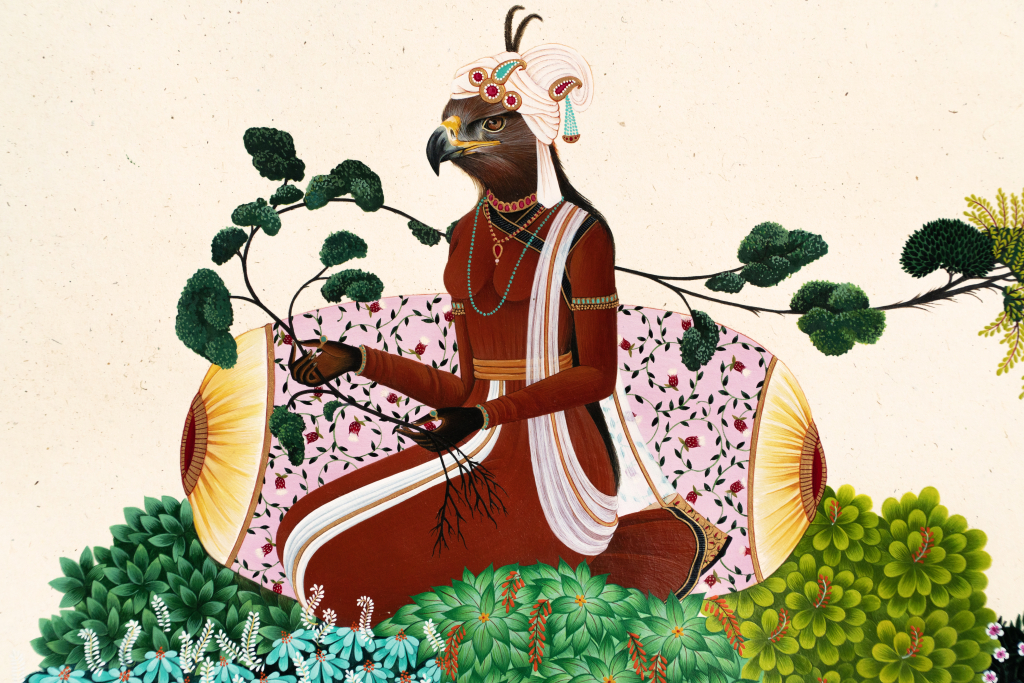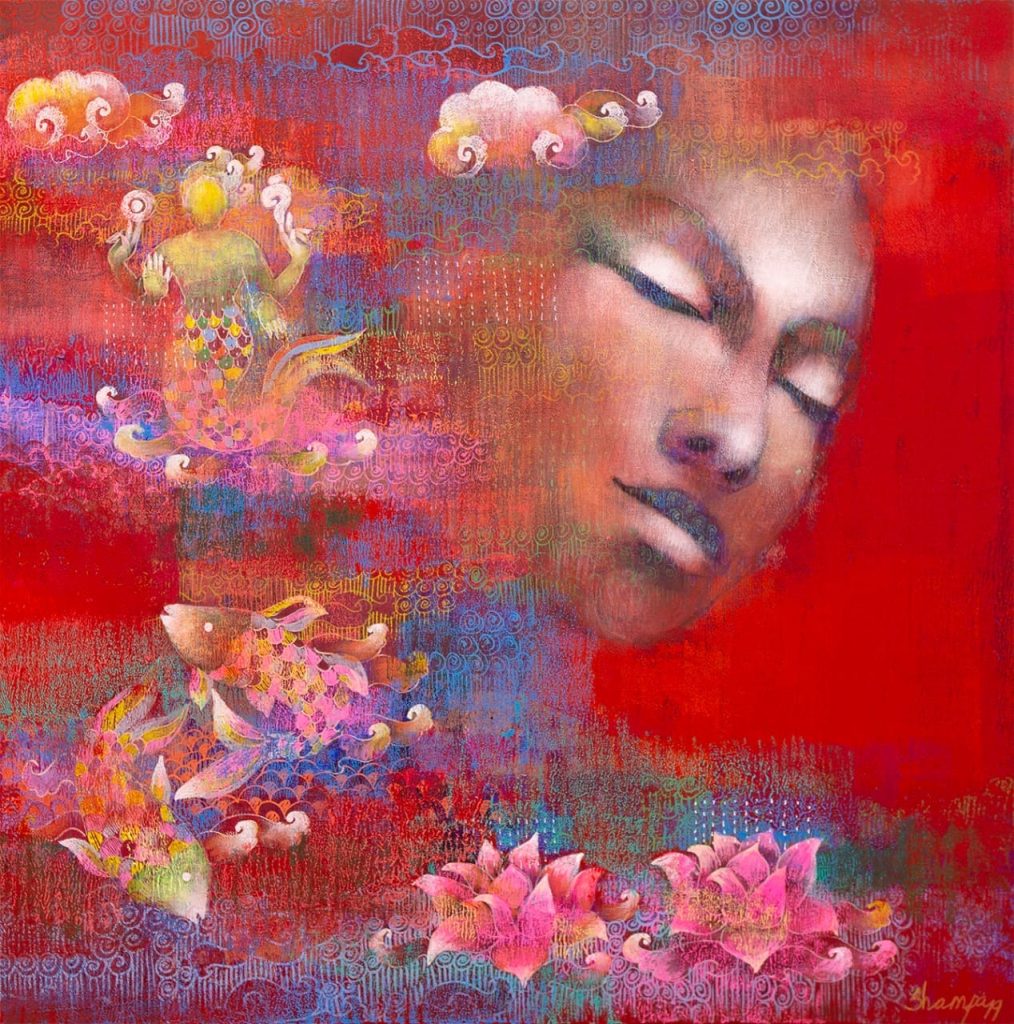The Land Sings Back is a deeply resonant exhibition that reimagines how we inhabit and listen to the living world. Presented by Colomboscope, Sri Lanka, in collaboration with Drawing Room, London, the exhibition runs from 25 September to 14 December 2025 at Drawing Room’s South London space, and brings together voices rooted in South Asia, Africa, and the Caribbean.
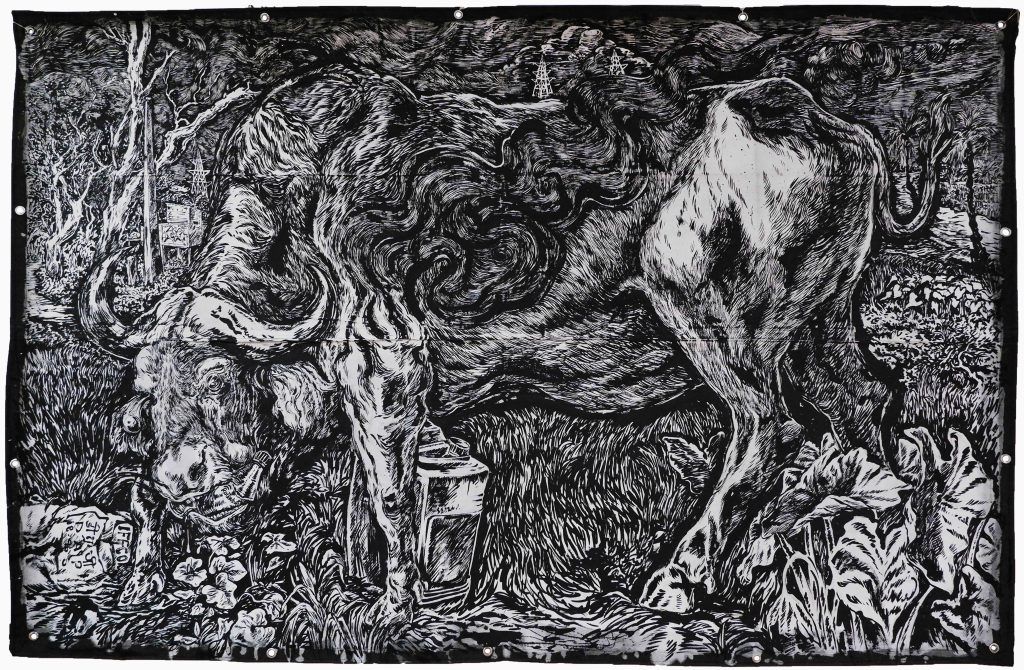
Curated by Natasha Ginwala, Artistic Director of Colomboscope and one of Frieze’s Five Curators to Watch in 2025, the exhibition grows out of threads initiated at Way of the Forest—Colomboscope 2023–24’s interdisciplinary exploration of ecology, interspecies justice, and cultural inheritances. In the exhibition, those threads become interwoven with broader diasporic and intergenerational perspectives, situating drawing as a living agent in storytelling, social history, Indigenous knowledge, and ecofeminist thought.
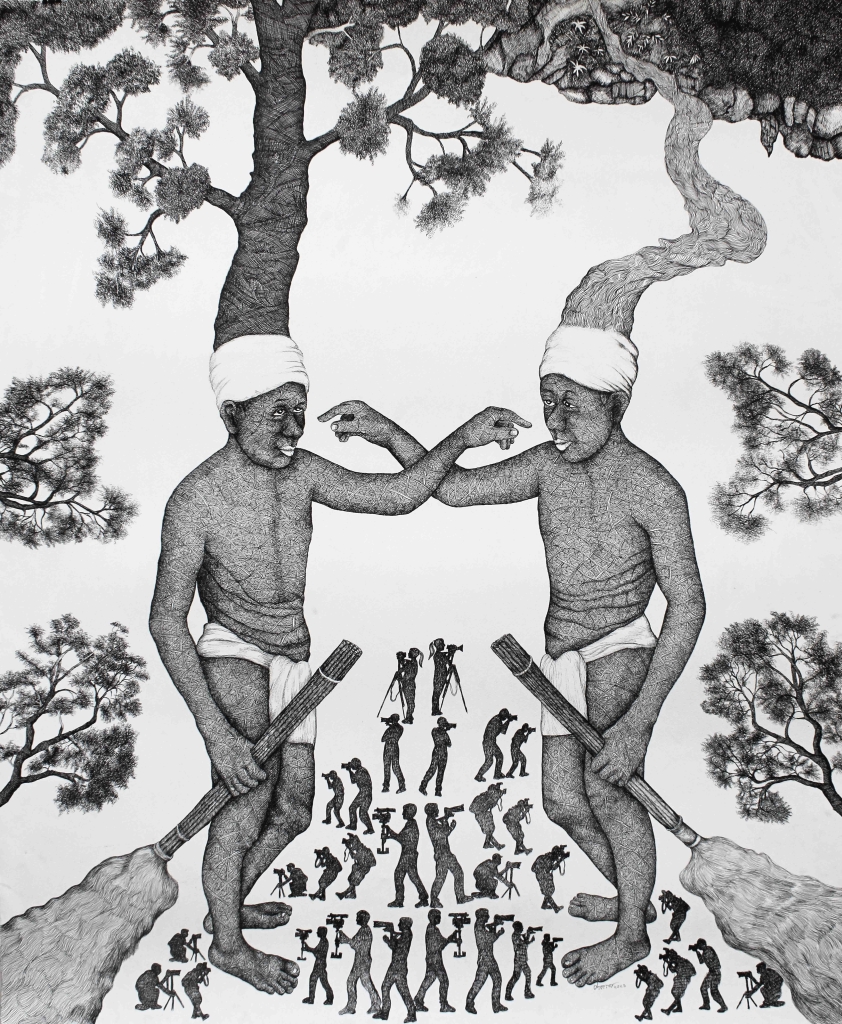
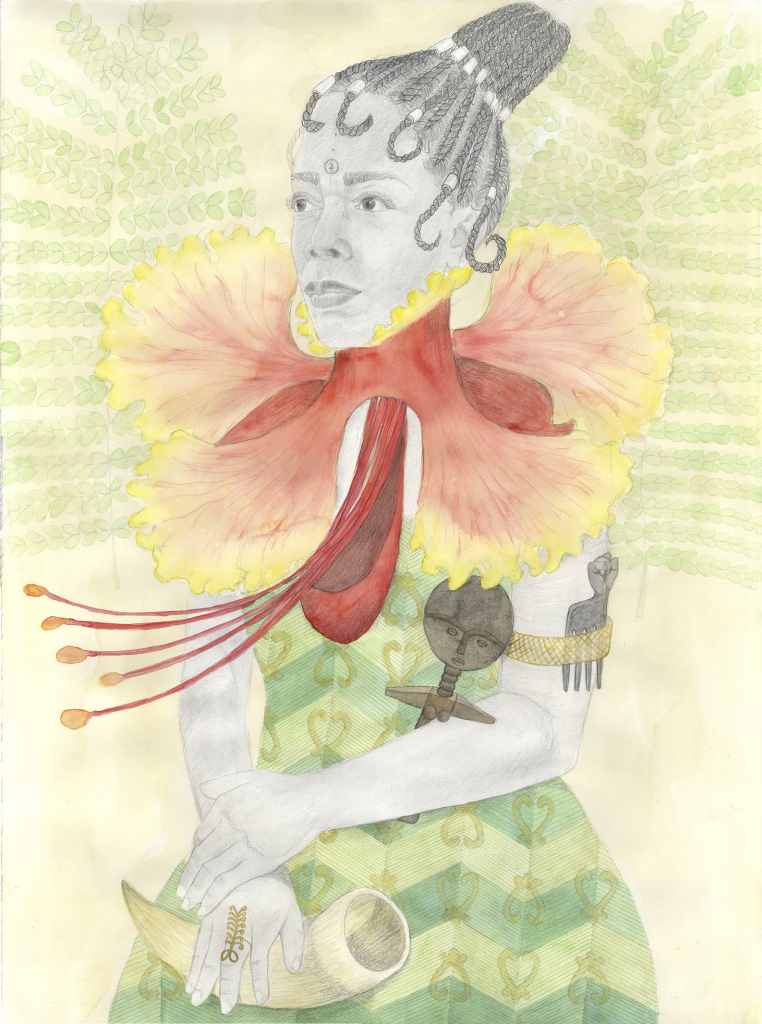
Artworks featured: Joydeb Roaja | The Future of Indigenous Peoples 3, 2024 | courtesy the artist and Jhaveri Contemporary
Charmaine Watkiss | The warrior exercises the right to dissent | 2025 | courtesy the artist
Ecologies of Entanglement
The exhibition foregrounds the entanglements between the human, vegetal, and animal realms, inviting audiences to dwell in zones where boundary lines dissolve. The works by thirteen participating artists, Lado Bai, Shiraz Bayjoo, Lavkant Chaudhary, Jasmine Nilani Joseph, Manjot Kaur, Otobong Nkanga, Rupaneethan Pakkiyarajah, Joydeb Roaja, Anupam Roy, Anushka Rustomji, Pamela Phatsimo Sunstrum, Arulraj Ulaganathan and Charmaine Watkiss channel botanical memory, ancestral imagination, and insurgent ways of knowing. What emerges is a vision of land as an animate interlocutor—one that bears witness, remembers, and resists.
For Ginwala, and the artists she has brought into dialogue, drawing becomes a way of recovering that knowing. A method to unlearn colonial taxonomies of classification and conquest, and instead seed conversations around reciprocity and regeneration.
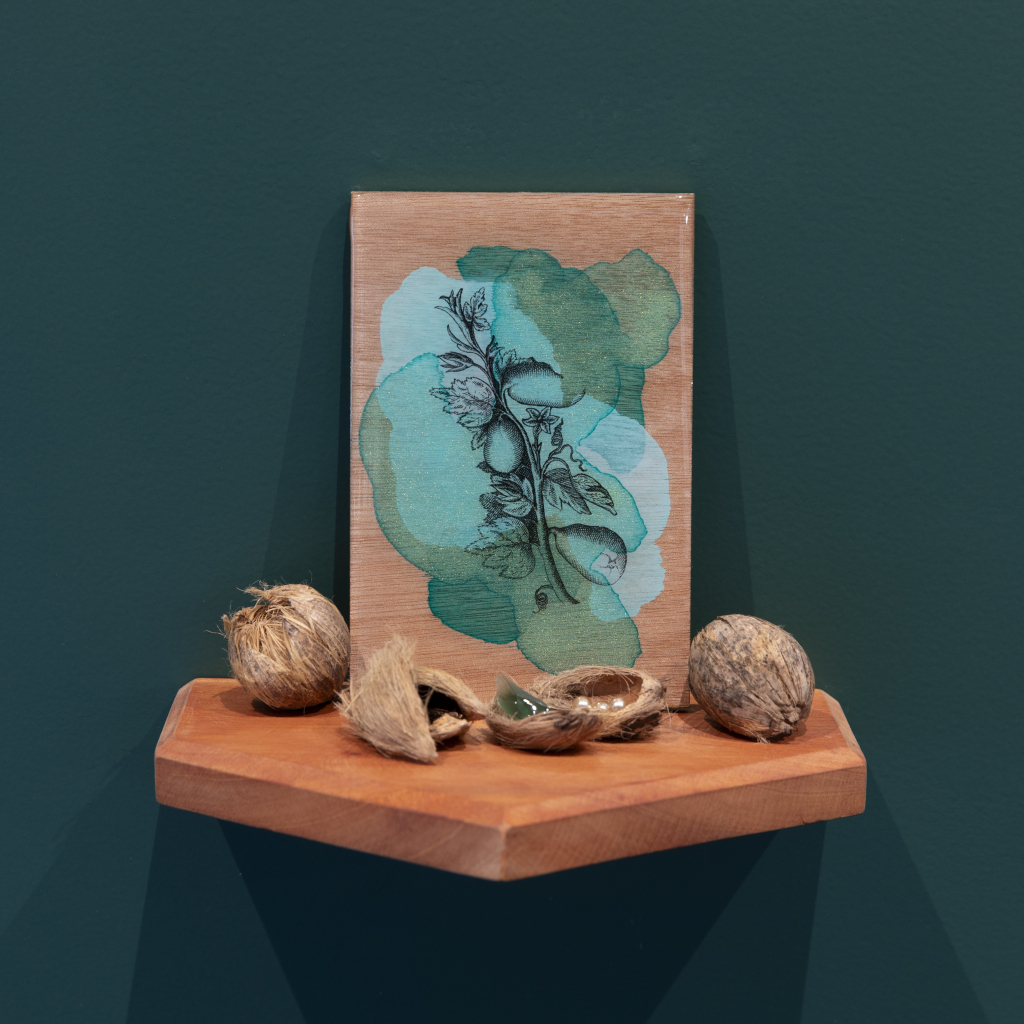
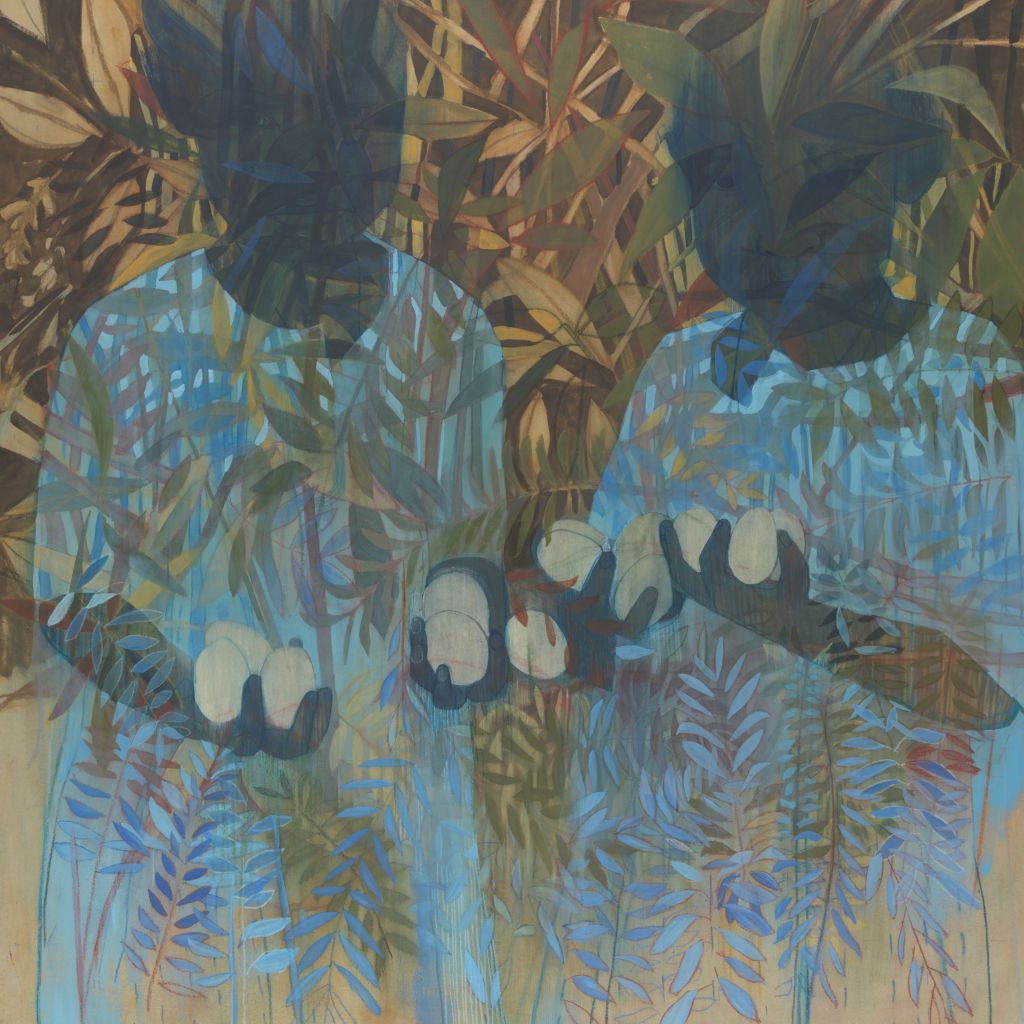
Artworked featured: Shiraz Bayjoo | Botanical Shrines, 2024 | courtesy 421 Arts Campus, Dubai, photo: Ismail Noor
Pamela Phatsimo Sunstrum | The Dream II (mae), 2023 | Courtesy The Fitzwilliam Museum, University of Cambridge, presented by the Contemporary Art Society through the Collections Fund at Frieze 2023/24
Engaging with cultural vocabularies through a lens of environmental justice, the exhibition approaches drawing as an active agent of social history, Indigenous knowledge and ecofeminist philosophy, rather than as a tool of illustration, classification and conquest. Exposing entanglements between the human-vegetal-animal, the works explore how botanical consciousness can reshape relationships among multitudinous life-forms, making room for regeneration amidst indebtedness, infrastructural collapse and neocolonial inheritance. The Land Sings Back encourages a connection with ancestral wisdom, reciprocal rather than extractive relationships with land.
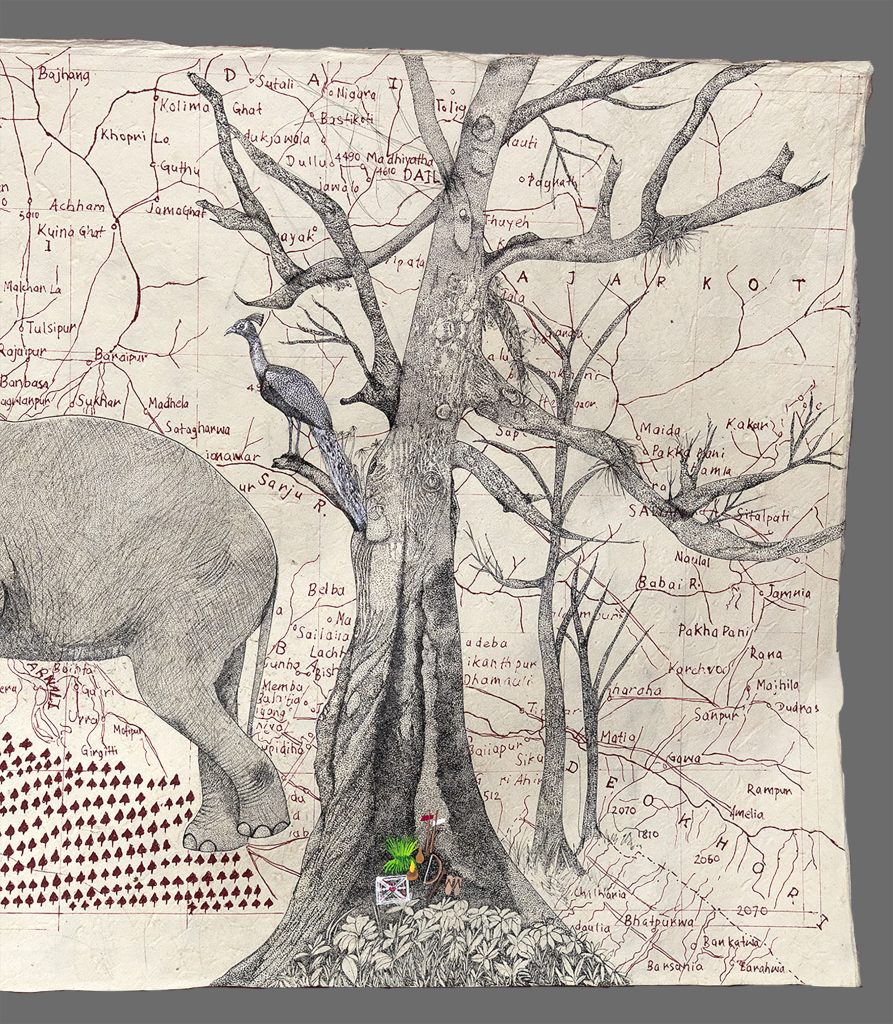
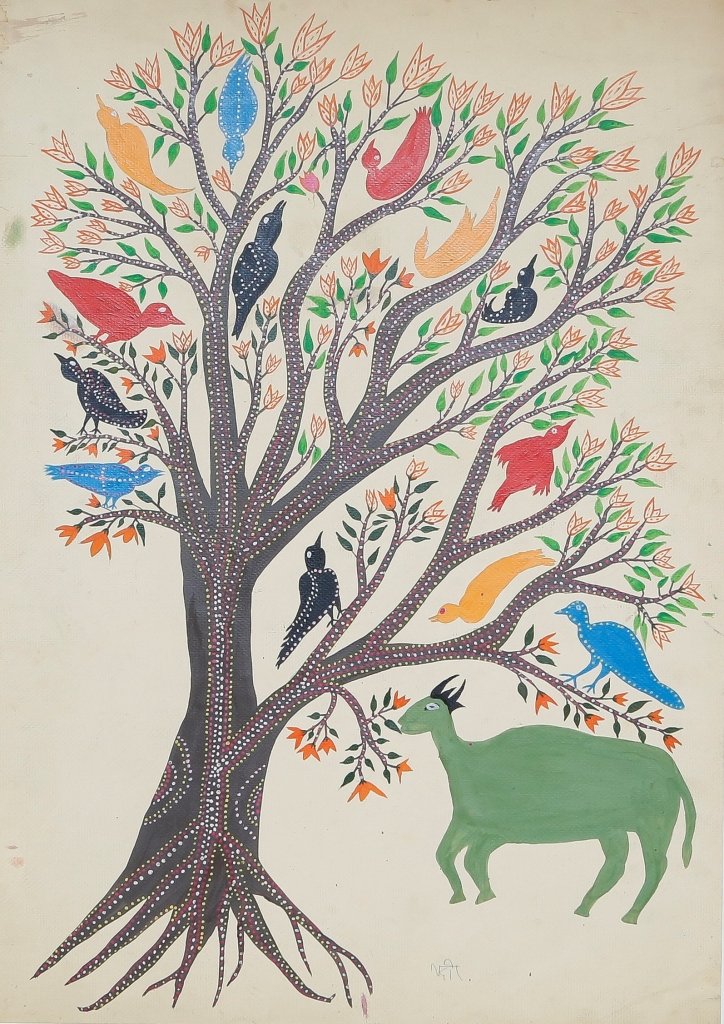
Artworks featured: Lavkant Chaudhary | “वन्होर” Banor: Rituals of Resistance & Reclamation (detail), courtesy the artist
Lado Bai | Peeple ka ped (Peepal Tree), early 1980s | courtesy Rob Dean Art
The Land Sings Back stretches the definition of drawing far beyond the page. Works take form as sound recordings, zines, ceramics, archival excavations, pedagogical workshops, and poster interventions, weaving together expanded vocabularies of mark and memory. These practices orient themselves toward environmental justice while also reckoning with inherited legacies of exploitation, infrastructural fragility, displaced communities, and extractive global systems.
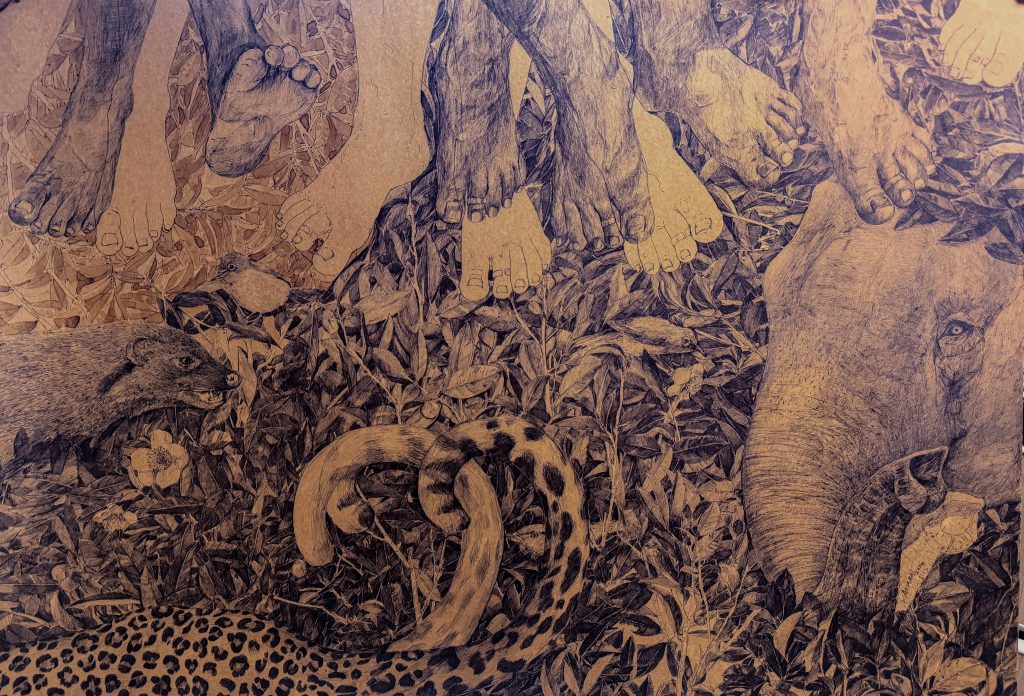
The exhibition’s public programme develops this further, produced in collaboration with the Centre for the Study of South Asia and the Indian Ocean World & The Institute of Advanced Studies at UCL, alongside the Paul Mellon Centre for Studies in British Art. These forums situate the exhibition within broader research-led conversations on decoloniality, collective pedagogy, and comparative cultural practices.
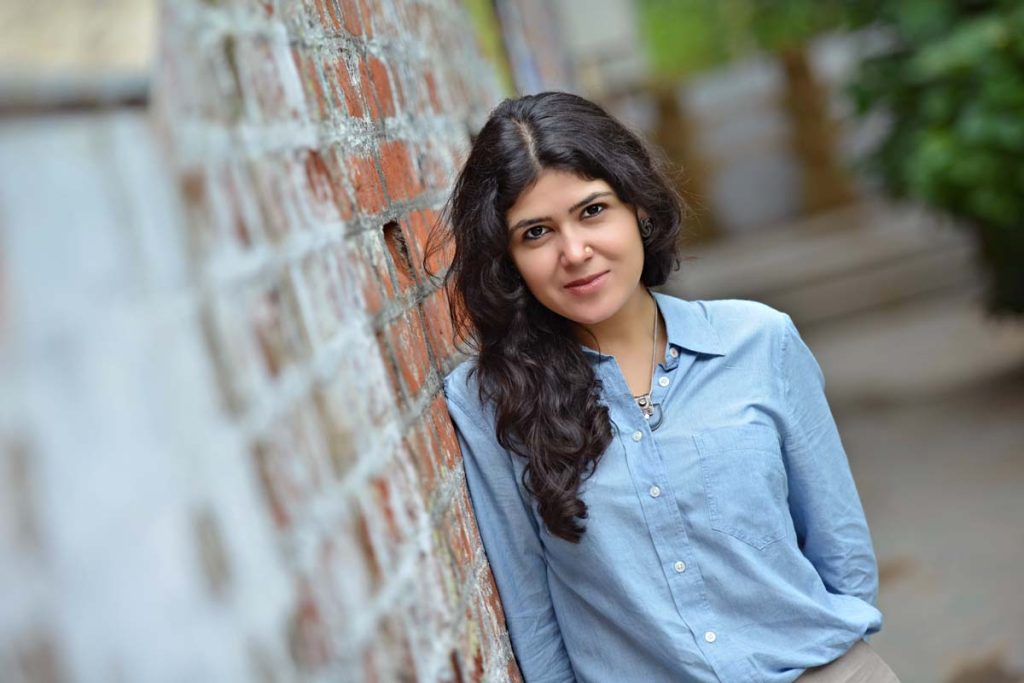
A Cross-continental Collaboration
For Drawing Room’s directors, inviting Ginwala was a response to her embedded commitment to curating ecologically attuned and intergenerational practices. Her work brings visibility to exceptional artistic talent emerging from South Asia and Africa, while connecting it to global circuits of contemporary art. Speaking of the exhibition’s vision, they underline the emphasis on multispecies ecologies, coloniality, and environmental justice, framing The Land Sings Back as part research, part reclamation.
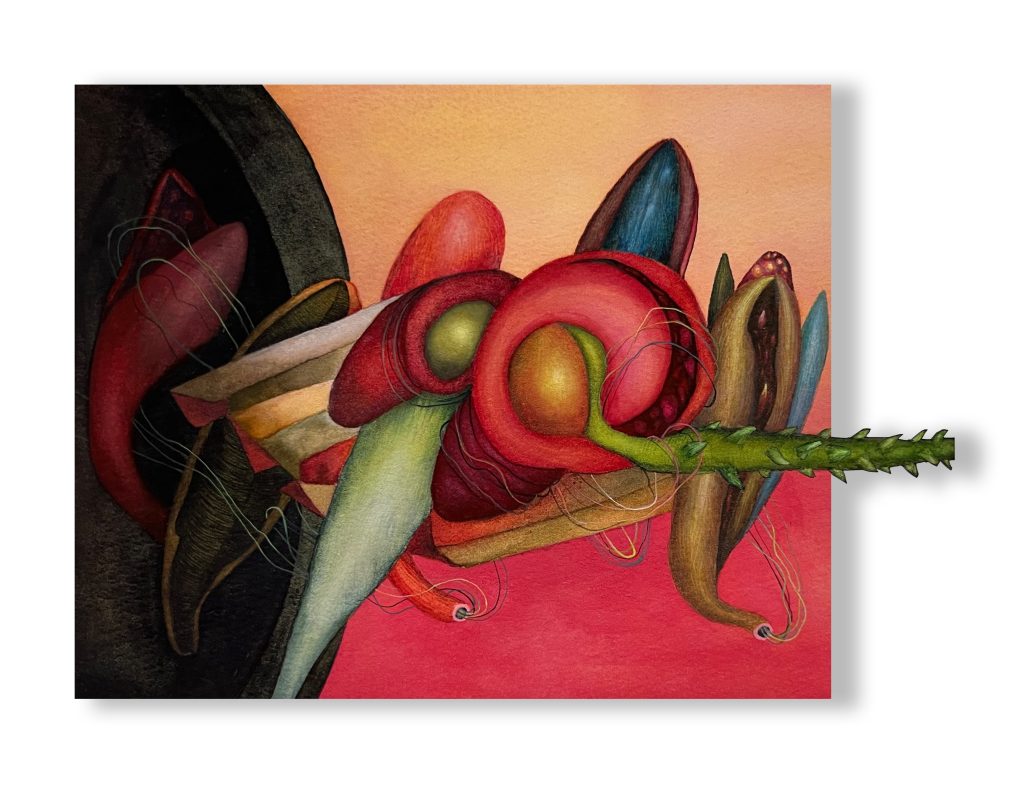
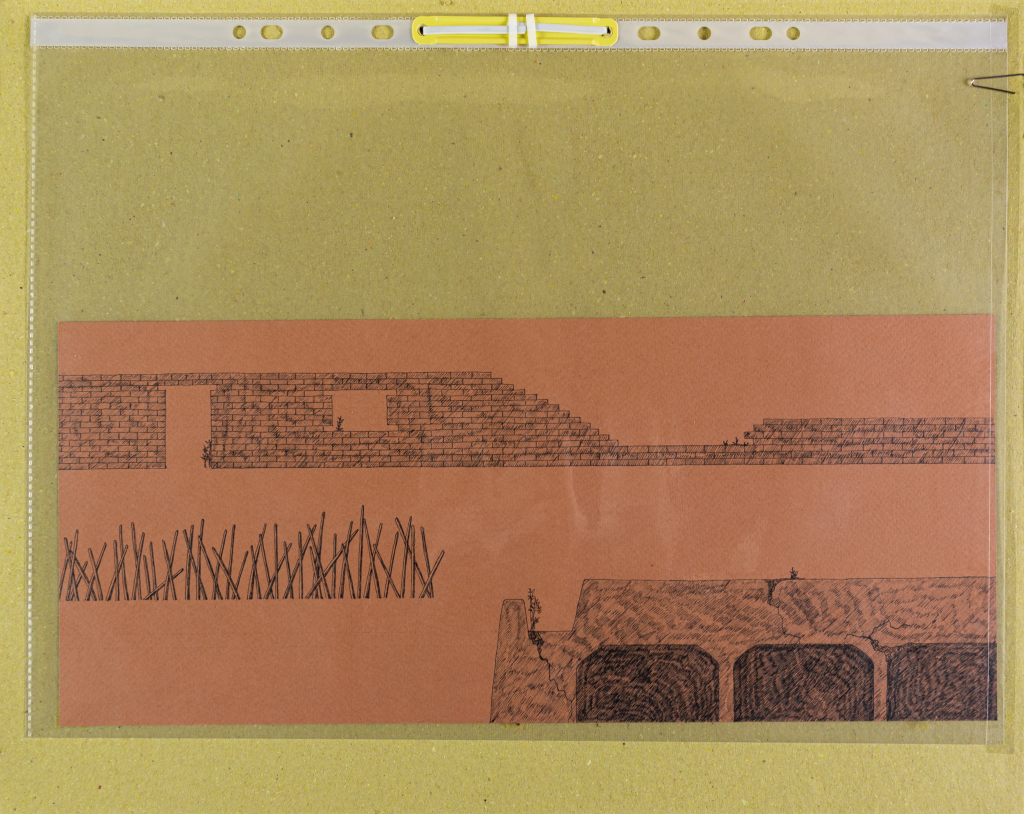
Artworks featured: Rupaneethan Pakkiyarajah | Border III, 2024 | courtesy the artist
Asmine Nilani Joseph | DS Waiting Room (detail), 2024 | courtesy The Museum of Modern & Contemporary Art Sri Lanka
The collaboration between Colomboscope and Drawing Room is made possible by a wide network of supporters, ranging from Cockayne Grants for the Arts and The African Arts Trust to leading galleries such as Project 88, Vadehra Art Gallery, Jhaveri Contemporary, and institutions including 421 Arts Campus in Abu Dhabi. This coalition affirms the urgency of creating spaces where artists, scholars, and publics can imagine new forms of coexistence in precarious times.
The Land Sings Back exhibition insists that art can act as chorus, as breath, as undergrowth, guiding us back toward a reciprocal relation with the world we have too long treated as resource rather than relative.
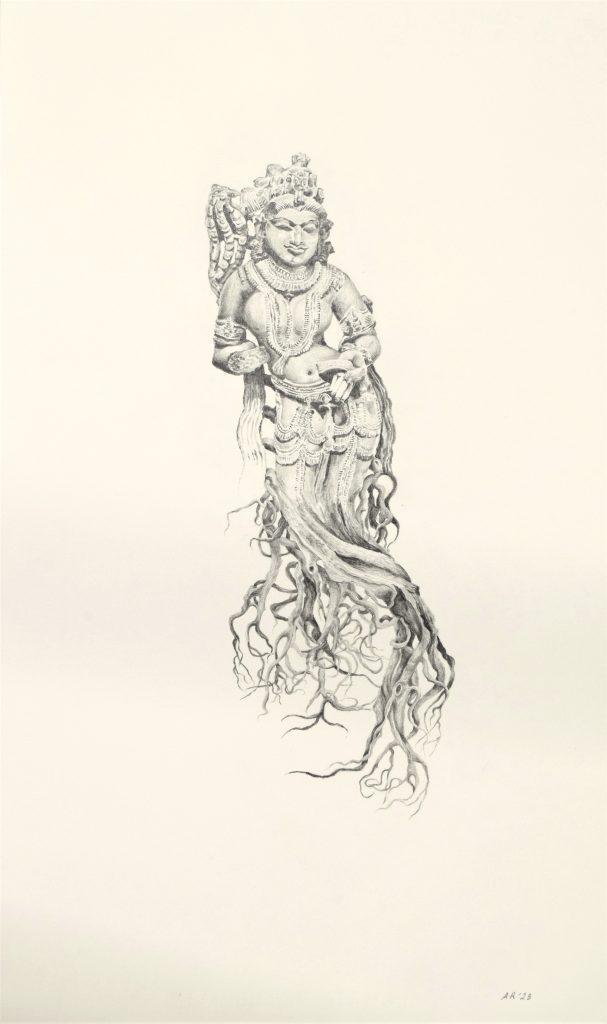
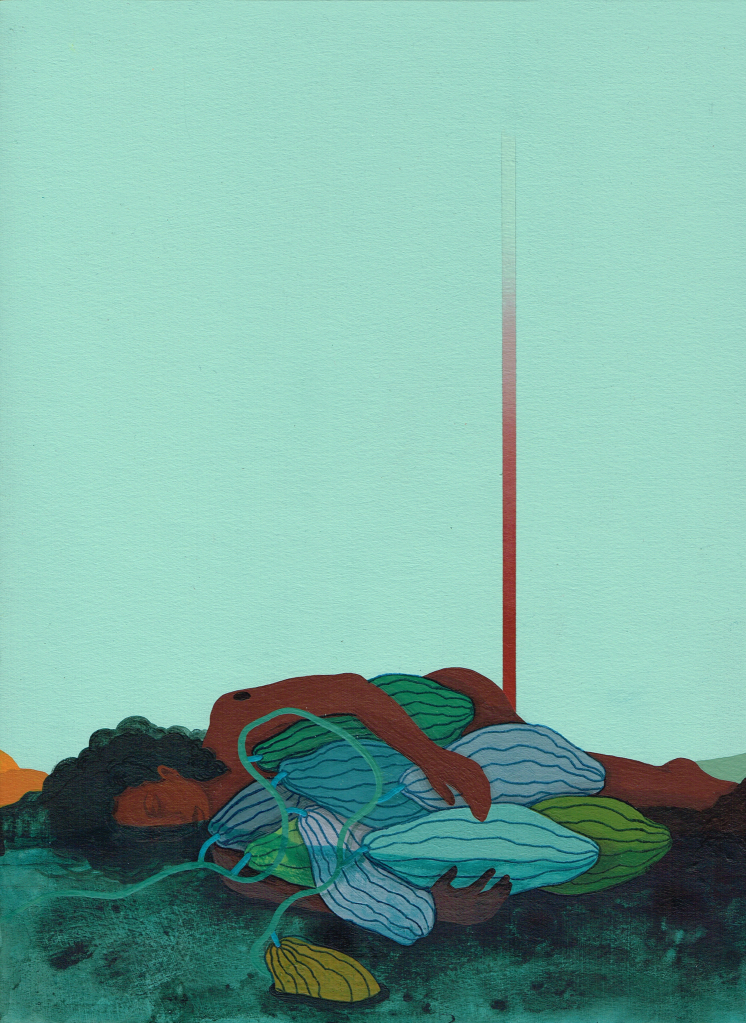
Artworks featured: Anushka Rustomji | Flesh & Foliage I, 2023 | Taimur Hassan Collection
Otobong Nkanga | Subsidence, 2025 | Otobong Nkanga; Courtesy of Lisson Gallery
Cover Image: Manjot Kaur | The Convocation of Eagles (detail), 2025 | Courtesy of the artist and mor charpentier, Paris.
Contributor

